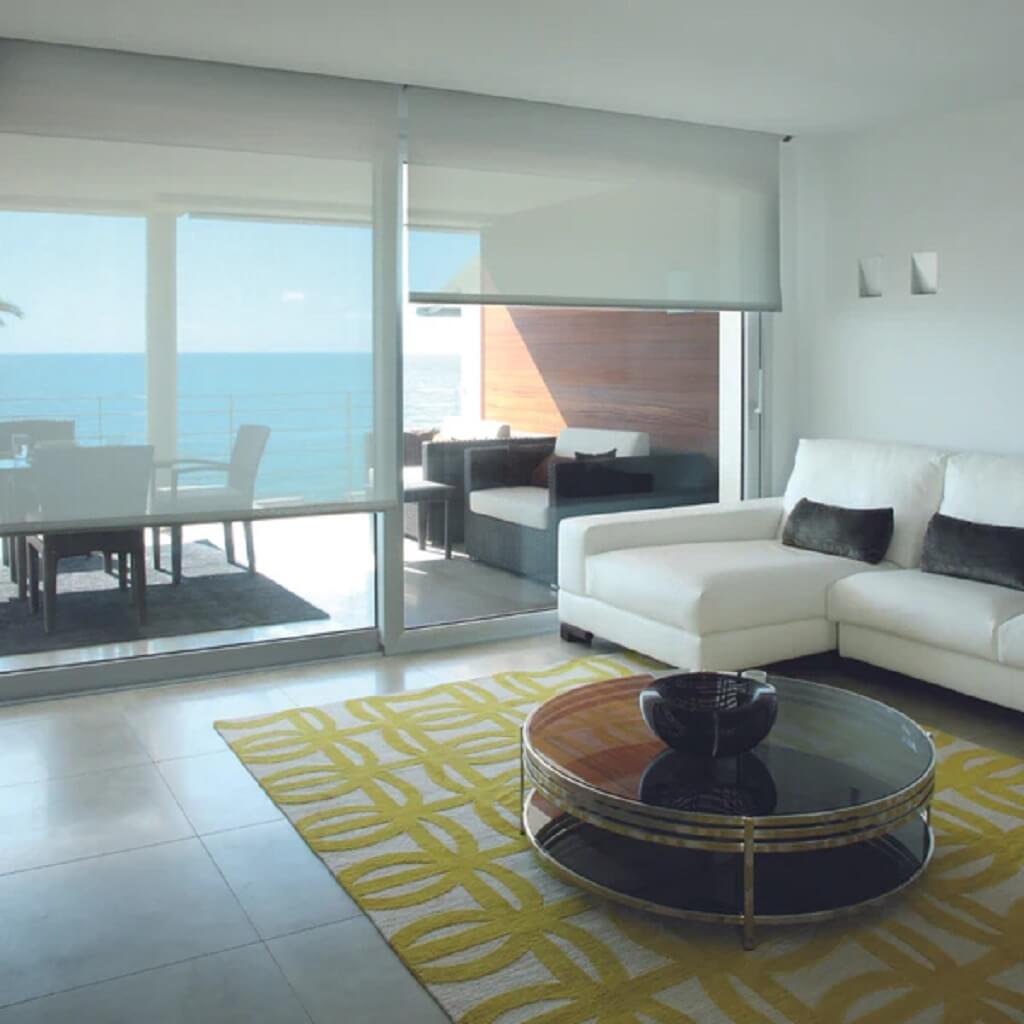Solar shades, a revolutionary addition to modern home automation and sustainable living, operate on the principle of harnessing sun energy to manage indoor light and temperature. At the core of this technology are photovoltaic cells, which are embedded in the blinds or installed on them. These cells are responsible for capturing sunlight and converting it into electrical energy. This conversion is the first step in a series of processes that make solar window shades an efficient and eco-friendly solution for homes and businesses.

Understanding Solar Shade Technology
The photovoltaic cells in solar shades are made of semiconductor materials, typically silicon. When sunlight hits these cells, it dislodges electrons, creating an electrical current. This process, known as the photovoltaic effect, is the cornerstone of solar power technology. The efficiency of these cells depends on several factors, including the quality of the material used, the intensity of the sunlight, and the angle at which the light hits the cells. Advances in photovoltaic technology have significantly improved the efficiency and durability of these cells, making them more practical and cost-effective for everyday use.
From Sunlight to Stored Energy
Once the photovoltaic cells convert sunlight into electricity, the next crucial component is the battery storage system. This system is where the converted energy is stored for later use. Modern sun shades often come with efficient and compact batteries that can store a significant amount of energy. The capacity of these batteries determines how long the window treatments can operate without direct sunlight, which is particularly useful during cloudy days or at night.
The stored energy in the batteries is then used to power the motorized mechanisms of the solar blinds. These mechanisms are responsible for the automated opening and closing of the shades, based on pre-set preferences or environmental conditions. The beauty of this system lies in its self-sufficiency; the coverings can operate entirely on the power generated by the sunlight they receive, making them an off-grid solution that reduces reliance on external power sources.
Environmental and Health Benefits of Solar Window Shades
An essential aspect to highlight in the context of energy-saving shades is their significant environmental and health benefits. These blinds go beyond mere energy efficiency and aesthetics; they contribute substantially to creating a healthier and more sustainable living environment.
Reduction in Carbon Footprint
By utilizing sun energy, solar window shades reduce reliance on fossil fuels for electricity generation. This shift to a renewable energy source significantly lowers the carbon footprint of homes and businesses, contributing to global efforts against climate change.
Improved Indoor Air Quality
Solar shades help in maintaining a more consistent indoor temperature, reducing the need for air conditioning and heating. This not only saves energy but also minimizes the circulation of indoor pollutants, which is common with HVAC systems, thereby improving indoor air quality.
Protection from Harmful UV Rays
These window treatments effectively block out harmful ultraviolet rays, which can cause skin damage and fade furniture and artwork. By filtering sunlight, solar shades protect occupants from UV exposure while preserving the condition and color of interior furnishings.
Noise Reduction
Solar window blinds can also contribute to a quieter indoor environment. Their design and materials can help dampen external noise, providing a more peaceful and serene living or working space.
Biophilic Design Contribution
By managing sunlight in a way that is harmonious with the outdoor environment, solar window shades align with the principles of biophilic design. This approach integrates natural elements into the built environment, promoting a stronger connection with nature, which is known to enhance mental and physical well-being.
Incorporating these points, sun window treatments prove to be more than just a functional element in a building. They are a testament to how modern technology can align with environmental sustainability and health consciousness, making them an exemplary choice for future-forward and eco-conscious consumers.
Optimizing Sunlight Exposure
The automated feature of solar shades is not just about convenience; it’s also about optimizing sunlight exposure for both energy efficiency and interior comfort. These coverings can be programmed to adjust automatically to the sun’s position throughout the day. During peak sunlight hours, the blinds can close or adjust to block out excessive heat and glare, helping to keep the interior space cool and reducing the load on air conditioning systems. This natural temperature regulation is a key benefit of energy-saving curtains, leading to significant energy savings.
Conversely, during colder months or less sunny times of the day, the shades can open up, allowing natural light to warm the space. This feature not only helps in reducing heating costs but also enhances the mood and ambiance of the interior space. The ability of sun drapes to adapt to changing light conditions also means they can protect furnishings and interior materials from UV damage, prolonging their life and appearance.
The Bigger Picture of Solar Shade Use
In conclusion, solar shades represent a harmonious blend of technology and sustainability. By utilizing the abundant energy of the sun, these window treatments offer a practical solution for energy management and interior comfort. The integration of photovoltaic cells, efficient battery storage, and automated systems allows them to function as independent units that can significantly reduce a building’s carbon footprint.
Moreover, solar blinds are a testament to the advancing field of green technology in everyday life. They reflect a growing awareness and commitment to sustainable living, showcasing how innovative solutions can bring about a positive environmental impact without sacrificing convenience or aesthetics. As technology continues to evolve, the potential for sun shades and similar sustainable solutions is bound to expand, paving the way for smarter, greener homes and workplaces.






